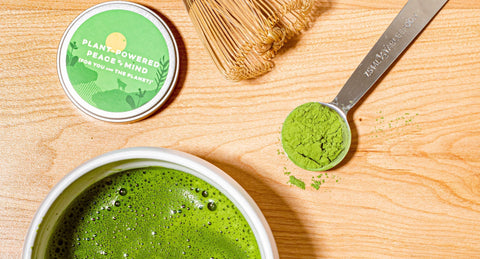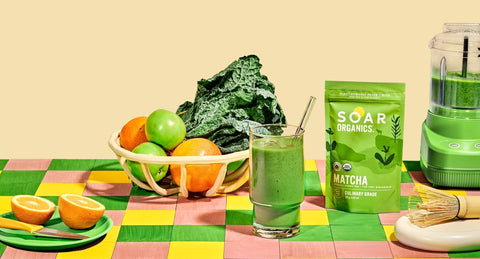When you whisk up a vibrant, velvety bowl of matcha, you're not just enjoying a cup of tea—you're sipping the result of centuries of craftsmanship. One of the most crucial steps in the making of high-quality matcha is the stone grinding process, an ancient technique that transforms tencha leaves into the ultra-fine powder we know and love.
From Tencha to Matcha: A Quick Recap
Before we get to the grind, it’s important to understand where matcha begins. Matcha isn’t just ground-up green tea—it's made from tencha, specially grown and processed tea leaves that have been:
- Shade-grown for several weeks to boost chlorophyll and L-theanine
- Harvested young for tenderness and sweetness
- Steamed to stop oxidation
- Air-dried without rolling (unlike sencha)
- De-veined and de-stemmed, leaving only the soft leaf matter
Only after all of this does the stone grinding begin.
What Is Stone Grinding?
Stone grinding is the traditional method of milling tencha leaves into matcha powder using a granite millstone—called an ishi-usu in Japanese. This process has been used for over 800 years and remains the gold standard for producing ceremonial-grade matcha.
How it works:
- Tencha leaves are fed slowly into the top of the mill.
- Two granite stones, carved with precise grooves, rotate against one another.
- As the stones turn, they crush the tencha into a superfine powder, with particles as small as 5 to 15 microns.
- The matcha powder falls out from the edges and is collected below.
How Long Does It Take?
Stone grinding is incredibly slow and delicate—and for good reason. It takes about 1 hour to grind 30 grams of ceremonial matcha. That’s just enough for 15–30 servings! This slow pace prevents heat buildup, which can degrade the matcha’s color, aroma, and nutrient content, especially the sensitive amino acid L-theanine and antioxidant EGCG.
Why Stone Grinding Matters
Here’s why stone grinding isn’t just a nostalgic tradition—it’s essential for quality:
- Ultra-Fine Texture: Matcha must be fine enough to suspend in water (not dissolve), creating that smooth, creamy consistency. Stone grinding creates a texture that’s impossible to replicate with modern high-speed mills.
- Preserves Nutrients: Fast grinding generates heat. Excess heat = oxidized, dull, bitter matcha. Stone mills run cool and slow, protecting the matcha’s bright green color and nutritional integrity.
- Enhances Frothability: The fine powder produced by stone mills whisks beautifully, creating the signature frothy layer on top of your matcha.
- Taste and Aroma: Low-temperature grinding helps maintain delicate aromatic compounds and umami-rich amino acids, resulting in a sweeter, more complex flavor.
The Craftsmanship Behind Each Mill
Each ishi-usu is hand-carved by artisans to exact specifications. The depth, angle, and spacing of the grooves must be just right to ensure smooth grinding without overheating or clumping. These millstones are often passed down through generations in tea-producing regions like Uji, Kyoto.
Final Thoughts: More Than Just a Grind
In a world of speed and automation, the stone grinding process reminds us of the care, time, and artistry behind every tin of premium matcha. It’s not just about crushing tea leaves—it’s about preserving the essence of matcha in its most vibrant and nourishing form.



